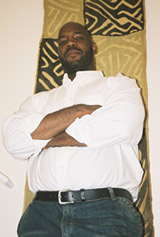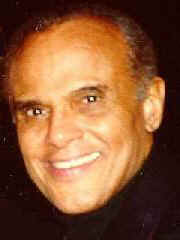This article makes
the important point that terrorism in America is nearly as old as America
itself that Harry Belafonte and several others were making after
9/11, regarding the notion that the attack on that day was the "first time"
terrorism struck the U.S., and offers some examples that need to be better
known and remembered without even including the actions against the Native
population.
Past Imperfect: Terror in Black and White: . . .terror has deep roots
in American soil
September 11, 2001, was far from the first instance of terrorism on American
soil. Terror — and specifically racial terrorism — has roots almost as old
as this country itself.
By William Jelani Cobb
Even before the death-colored clouds had cleared from the skies over lower
Manhattan the words worst and first were already becoming synonymous.
Three years after the terrorist attacks on New York and Washington, DC,
September 11th has become a sort of touchstone
in the common consciousness, a
moment of catastrophic unreality that was force-fed into our real world.
Looking back at the all-too-recent events of that day, it’s easy to
understand why 9/11 seems to have blotted out all prior memory and
conviction. In its scale and media-age spectacle, it was unprecedented. Its
repercussions have only yet begun to echo. It remains the context and
subtext for this moment in history. 9/11 is the ghost in our bloodstream.
Still it must be said: the idea that terror is new to American soil has been
politically beneficial to the Bush Administration which, in the absence of
any domestic accomplishments to speak of, has staked its future on “keeping
America safe.” In the wake of the bombing of the World Trade Center and the
Pentagon, a misstatement made amid the trauma of so much death and
destruction gradually calcified into a fact of public perception: this has
never happened before.
But history is long and truth told, terrorism in America is nearly as old
as America itself. Only a century earlier, a terrorist had actually
succeeded in assassinating a President of the United States. William
McKinley died, in 1901, shot by Leon Czolgosz, an anarchist assassin.
And if we think of terrorism as organized acts of violence directed at
civilians in order to instill fear and affect politics, then it is
impossible to ignore the fact that racism and terrorism are inseparable in
American history. On one level, race is irrelevant on this bleak anniversary
— black remains are indistinguishable among the lost thousands cremated in
terrorist flames in NY and DC. But the past is relevant here. Race is
the link connecting acts of terrorism as disparate as the guerilla raids
fought over slavery in Kansas in the 1850s through the Oklahoma City bombing
of 1995.
To cut to the chase, American history is a harvest of strange fruit. It
would be easy, at this distant remove, to forget that Timothy McVeigh, the
homegrown terrorist who orchestrated the bombing of the Alfred P. Murrah
Building in Oklahoma City that claimed 168 lives did so in order to ignite a
race war. McVeigh’s attack was literally taken from the pages of Andrew
McDonald’s racist potboiler The Turner Diaries. McVeigh himself had spoken
at length about the federal government’s role in usurping the rights of
white people and argued that the government had become an instrument solely
for furthering the interests of people of color and Jews.
At the time it occurred, Oklahoma City was referred to as the worst instance
of terrorism on American soil. But that assessment required a certain
historical near-sightedness to be true. The 1995 bombing was not even the
worst act of terrorism in the state's history. The 1921 Tulsa Race Riot, in
which bands of armed and deputized whites attacked black residents of the
city, resulted in twice as many deaths as the Oklahoma City bombing by the
most conservative estimates. (The town of Rosewood, Florida was burned
completely off the map by white rioters that same year.) In 1906, entire
sections of Atlanta were burned to the ground and untold numbers of blacks
were pulled from their homes and lynched. Just after the Civil War, Southern
whites killed 46 blacks, injured over a hundred and burned 90-odd homes to
the ground in Memphis — while Northern troops stationed in the city watched.
And these are only a handful of the scores of town and neighborhood burnings
that characterized black life in the pre-Civil Rights era.
Nor can it be said that McVeigh was a historical anomaly. Just over a
century earlier, the organized terrorist campaigns of alleged Southern
Redeemers began with the goal of eradicating black political
participation during Reconstruction. Early in the 20th century, their racist
campaigns were mythologized by Thomas Dixon and D.W. Griffith. As the late
writer Ralph Wiley pointed out that McVeigh bombed a building in order to
live out the plotlines of a novel in the same way that 19th century
terrorists attempted to live out the plotlines of Birth of a Nation.
Griffith’s masterpiece of racial propaganda was based upon Dixon’s novel
The Leopard’s Spots. The success of Birth of a Nation
inspired a resurgence of the Ku Klux Klan — which had nearly died out — and
became the basis for their ritual burning of the cross, an act that had been
invented for it’s dramatic value, to the story. The terror directed at black
people who had the audacity to take the Emancipation Proclamation at face
value resulted in over 3000 lynchings between 1880 and 1920.
The names, dates and casualties of these assorted inhumanities is
innumerable: the pandemic of rape directed at black women after
Reconstruction, the litany of assassinations, the fatal bombing of the home
of NAACP activists Harry and Harriette Moore in 1951, the bombing of Fred
Shuttlesworth’s home in 1956, the bombing of Martin Luther King’s home that
same year. The bombing of the 16th Street Baptist Church in Birmingham,
Alabama in 1963 — a city so defined by racial terrorism that it was
known as “Bombingham.”
And ultimately even the prerequisites for black freedom start to fit the
technical definitions: Sherman’s march through Atlanta. Nat Turner. John
Brown’s Raid. Sherman was an early proponent of the concept of “total war,”
which recognized no battle lines and few civilian zones. His famed march to
the sea was designed to both instill fear in the Southern civilian
population and to break the will of the Confederate soldiers miles away from
their jeopardized homes. Nor are the revolts of Nat Turner and John Brown
exempt. The difficult truth is that sometimes the charge of terrorism
lies in the eye of the beholder.
None of this is meant to lessen the tragedy of the lives stolen three years
ago — it is bad moral mathematics to even weigh any one tragedy against
another — but it does raise questions about the current administration’s use
of the term "terrorist." In the midst of a public stricken with
post-traumatic stress syndrome and a presidency that has used fear as its
primary political tool, we would do well to recall that terror has deep
roots in American soil.
William Jelani Cobb is an
assistant professor of history at Spelman College and editor of The
Essential Harold Cruse. He can be reached at
creative.ink@jelanicobb.com
Visit his website at
www.jelanicobb.com
First
published: September 15, 2004
http://africana.com/columns/cobb/ht20040915terror.asp
© Hulton-Deutsch Collection/CORBIS

